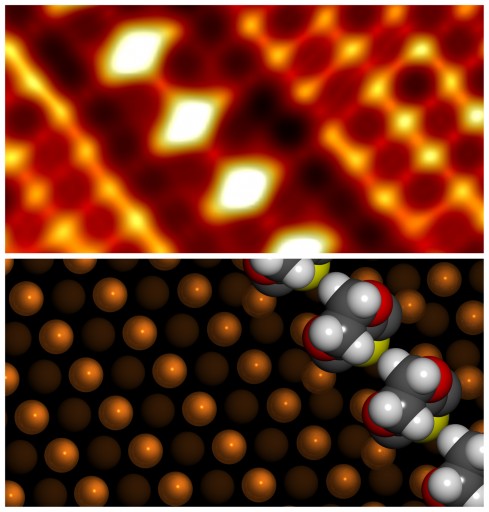Polymer synthesis could aid future electronics
July 20, 2010

A high-resolution scanning tunneling microscope image (top) and density functional theory-calculated structures (bottom) reveal the formation of a well-organized PEDOT polymer (ORNL)
In a paper published in the Proceedings of the National Academy of Sciences, a team of researchers from Canada and the Department of Energy’s Oak Ridge National Laboratory. and two Canadian universities outlined their success in growing highly structured short chains of polymer poly(3,4-ethylenedioxythiophene), or PEDOT.
Synthesis of a conjugated organic polymer–widely used as a conductive material in devices like light-emitting diodes, televisions and solar cells–could mean more efficient, cheaper electronics. Because of its role as conductive material in organic light-emitting diodes, PEDOT is found in many electronic devices such as televisions and computer monitors, as well as many solar panel cells.
Improving and controlling the molecular order of a nanostructured PEDOT material is critical to the polymer’s performance in electronic applications. The highly ordered polymer arrays such as those constructed by the researchers could lead to increased efficiencies in a multitude of electronic devices.
To create ordered arrays of the PEDOT polymer, the team placed a precursor molecule onto a copper crystalline surface, which helped to guide and initiate the polymerization reaction. Team member Vincent Meunier of ORNL compared the process to placing eggs in an egg carton, where the free energy minima, or “indentations,” in the copper surface allow the molecules to neatly stack next to each other to form a compact and organized polymer structure.
More info: Oak Ridge National Laboratory news